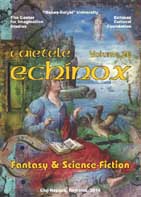Parabolic Narrative Mechanisms and Fictional Structures in Petru Cimpoeşu’s Novels
Parabolic Narrative Mechanisms and Fictional Structures in Petru Cimpoeşu’s Novels
Author(s): Călin TeutişanSubject(s): Literary Texts
Published by: Universitatea Babeş-Bolyai
Keywords: Contemporary Romanian literature; Petru Cimpoeşu; Fictional worlds; Heterotopia; Posthumanism.
Summary/Abstract: The fictional worlds of Petru Cimpoeşu’s novels evince a type of plausibility that is solely revealed in relation to themselves and to their own structural and functional laws. His narrative entities can be interpreted through the lens of comprehensive concepts such as those of possible worlds, narrative domains (Toma Pavel), or “heterotopian” zones (Brian McHale). Cimpoeşu’s Roland Island and Abraxa are such “zones” in which the text simultaneously constructs and deconstructs a space of ontological strangeness. The apocalyptic parables in Cimpoeşu’s prose are populated by characters who apparently guide themselves by Manichaean ethical tenet, of the melodramatic type. The strangeness of the characters and the imaginary zones that they inhabit also makes it apparent that these narratives pertain to a poetics of the posthuman.
Journal: Caietele Echinox
- Issue Year: 2014
- Issue No: 26
- Page Range: 130-137
- Page Count: 8
- Language: English
- Content File-PDF

